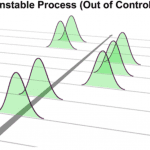
Once you have identified the scope of the FMEA project, made the scope visible, it is time identify the FMEA team members. This article discusses the composition of the FMEA team, including why each member is needed, and the underlying reason for a cross-functional team.
“Alone we can do so little; together we can do so much.” Helen Keller












 Ask a question or send along a comment.
Please login to view and use the contact form.
Ask a question or send along a comment.
Please login to view and use the contact form.